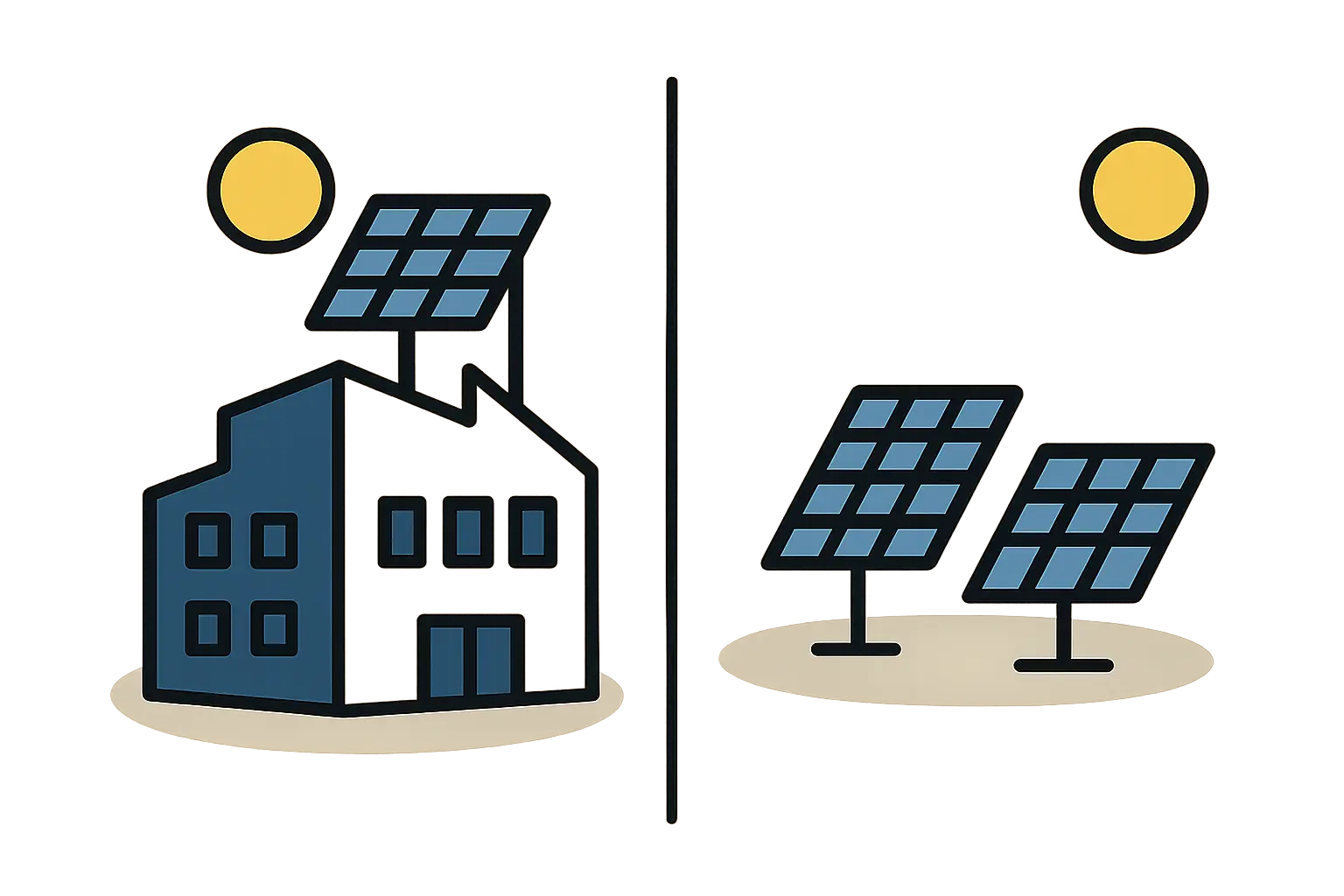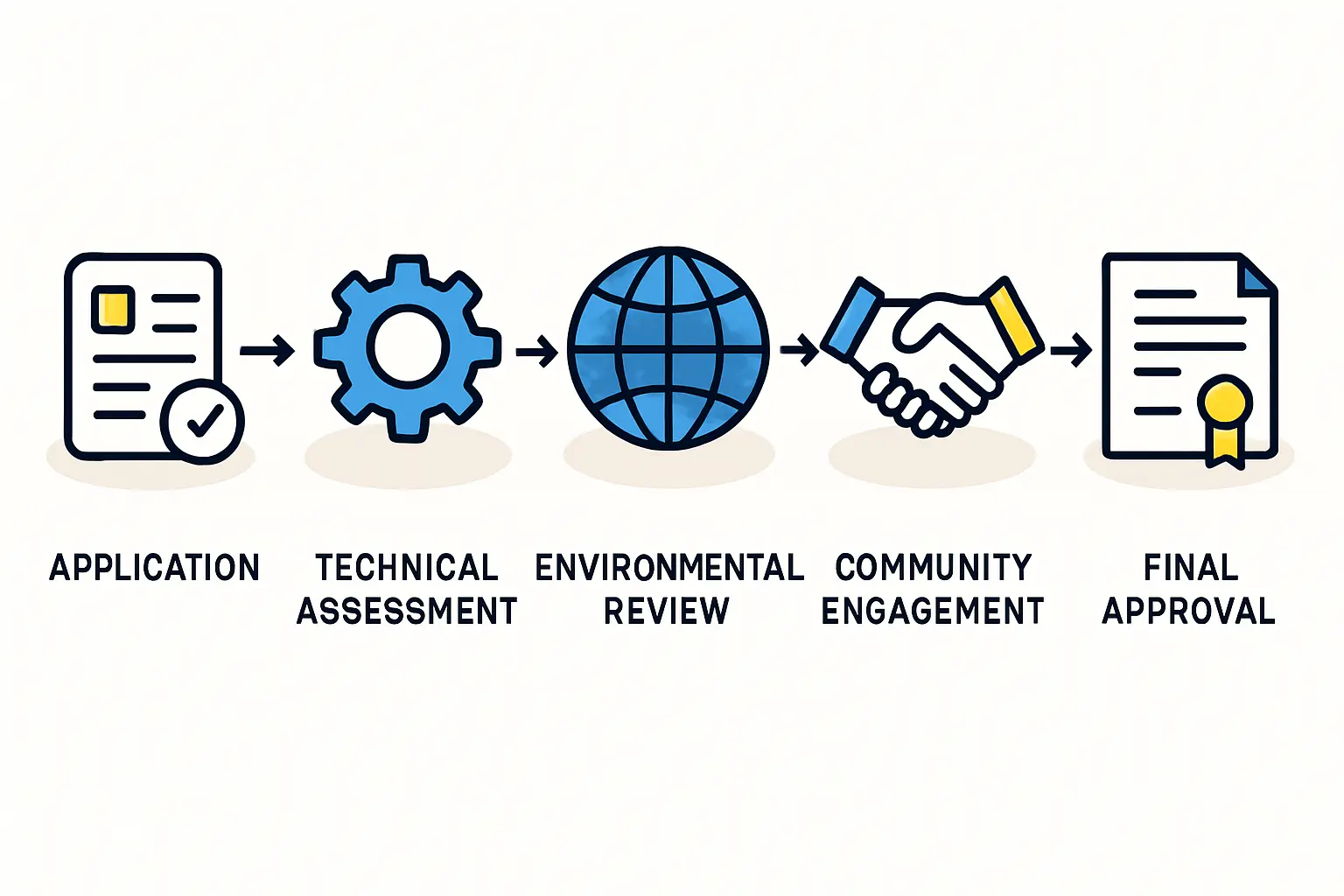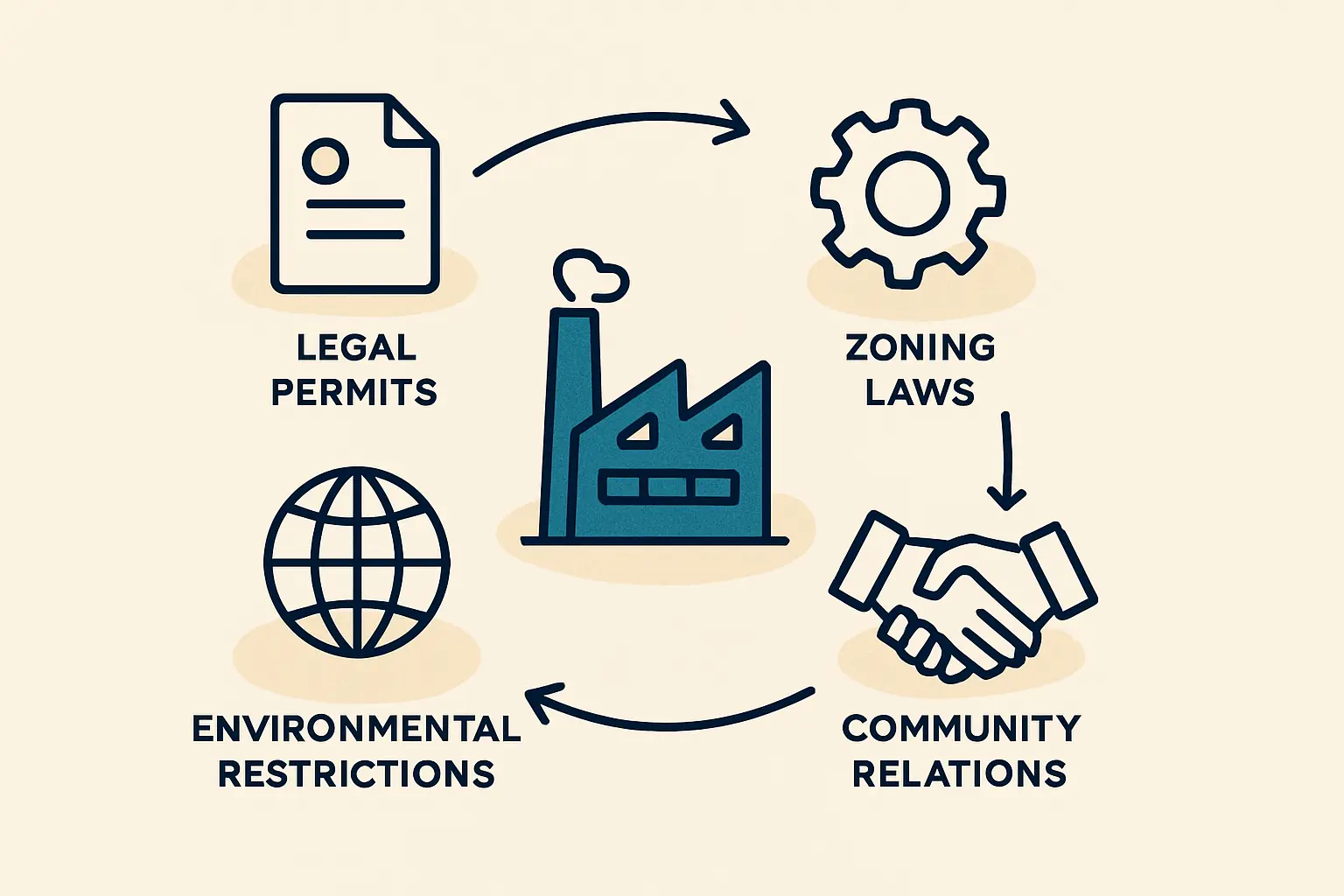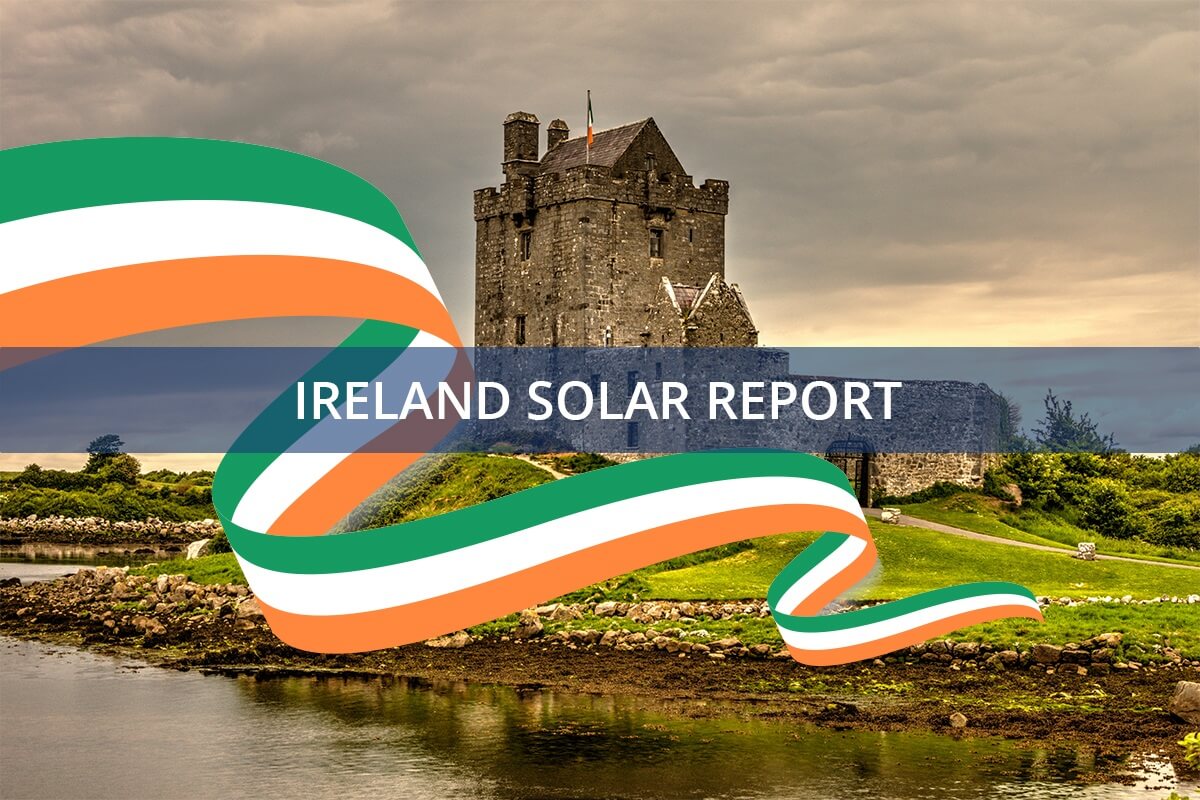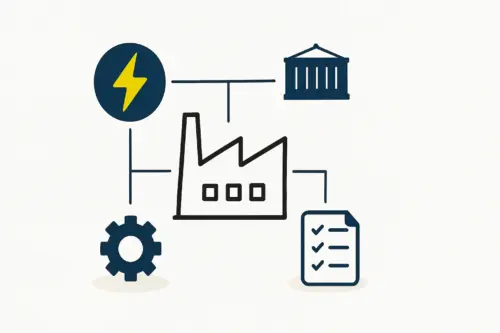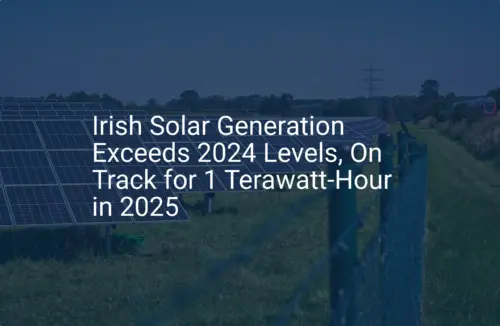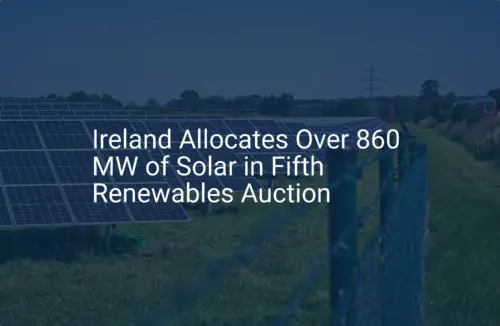An investor might have a comprehensive business plan, secured financing, and identified technology partners for a new solar panel manufacturing venture, but a critical and often underestimated hurdle remains: securing the legal right to build.
In Ireland, this process is governed by a strict framework of planning permission and environmental regulations. Overlooking this stage can lead to significant delays and costs, potentially jeopardizing the entire project before a single foundation is laid.
This guide provides an overview of the Irish regulatory landscape for industrial developments, focusing specifically on the requirements for establishing a solar panel factory. It covers the key concepts of planning permission, county-level zoning, and the Environmental Impact Assessment (EIA) process to offer a foundational understanding for any entrepreneur considering this venture.
Understanding the Irish Planning Permission Framework
The planning system in Ireland operates on a two-tier basis. At the national level, An Bord Pleanála serves as an independent body that handles appeals against decisions made by local authorities. For an investor looking to build a new factory, however, the journey begins at the local level with one of the 31 local planning authorities, typically a City or County Council.
Each County Council develops and enforces a County Development Plan (CDP). This statutory document acts as a blueprint for development within its jurisdiction, outlining policies and objectives for land use over a six-year period. The CDP is the primary document an investor must consult, as it dictates which types of development are permissible in specific areas. A proposal that contradicts the local CDP is highly unlikely to receive permission.
The Critical Role of Zoning for Industrial Development
A core component of every County Development Plan is land-use zoning. Zoning maps designate specific parcels of land for particular purposes, such as residential, commercial, agricultural, or industrial use. For a solar panel factory, the goal is to find a site already zoned for ‘Industrial,’ ‘Enterprise,’ or a similar classification.
Attempting to build an industrial facility on land zoned for agricultural or residential use would require a complex and uncertain rezoning application. The most direct path to approval is to align the project with existing zoning objectives. The search for a suitable location must therefore extend beyond physical characteristics to include a thorough review of the local zoning map. Site suitability is a fundamental part of meeting the overall building requirements.
Environmental Impact Assessment (EIA): When Is It Required?
For large-scale industrial projects, planning permission is often linked to environmental regulations. The Environmental Impact Assessment (EIA) is a formal process designed to evaluate the likely significant environmental effects of a proposed project before approval is granted.
In Ireland, certain types of projects automatically require an EIA based on their size and nature, as defined in planning legislation. While a solar panel factory may not always meet the mandatory threshold, the planning authority can still require a ‘sub-threshold’ EIA if it determines the project could have significant effects on the environment due to its location, scale, or the nature of its emissions.
An Environmental Impact Assessment Report (EIAR) must be prepared by qualified experts and submitted with the planning application. This comprehensive document examines the project’s potential impact on:
Ready to make big Profits?
The solar Industry is Booming
WE HELP NEWCOMERS to the solar industry start their own solar module production line. Customers can make BIG PROFITS by selling modules and finding investors, without wasting money and time on things they don't need!
- Biodiversity (flora and fauna)
- Land, soil, water, air, and climate
- Population and human health
- Material assets and cultural heritage
- The interaction between all these factors
The solar module manufacturing process involves various materials and steps, all of which are scrutinized in an EIAR. The report must not only identify potential negative impacts but also propose specific mitigation measures to avoid, reduce, or remedy them.
Key Considerations for a Successful Planning Application
A well-prepared planning application anticipates the concerns of the planning authority and the local community. Several factors are critical to a smoother process.
Pre-Application Consultation
Before formally submitting an application, investors are strongly encouraged to arrange a pre-application consultation with the relevant planning authority. This meeting provides an opportunity to present the initial proposal, receive feedback from planners, and identify potential issues early on. Based on experience from J.v.G. turnkey projects, engaging local engineering and environmental consultants at this stage is essential for success, as they can navigate the nuances of the local County Development Plan.
Public Consultation and Community Engagement
Once a planning application is submitted, it becomes a public document. Members of the public and prescribed bodies have a statutory period (typically five weeks) to inspect the plans and submit observations or objections. A project that generates significant local opposition can face delays and appeals. Proactive community engagement—clearly communicating the project’s benefits (such as local employment) and addressing concerns (like traffic or noise)—can make a significant difference.
Infrastructure and Site Suitability
The planning authority will assess whether the proposed site is serviced by adequate infrastructure. This includes:
- Road Access: Can the local road network safely accommodate heavy goods vehicles for construction and operations?
- Utilities: Is there sufficient capacity for water supply, wastewater treatment, and electricity?
- Environmental Sensitivity: Is the site located near protected areas, such as a Special Area of Conservation (SAC) or Special Protection Area (SPA)?
A successful application must demonstrate that the site can support the proposed solar panel production line without placing undue strain on public infrastructure or harming the local environment.
Frequently Asked Questions (FAQ) for Investors
How long does the planning permission process typically take in Ireland?
A local authority is legally required to make a straightforward decision within eight weeks, but this timeline can be extended if the authority requests further information. If an EIA is required or the decision is appealed to An Bord Pleanála, the process can easily extend to a year or more.
What is the difference between a solar farm and a solar factory in terms of planning?
The two are very different. A solar farm is an energy generation project, typically classified as an agricultural or infrastructure development, and is assessed on its visual impact and land use. In contrast, a solar factory is a heavy industrial building subject to strict industrial zoning, building regulations, and potential industrial emissions licensing from the Environmental Protection Agency (EPA).
Can I build a solar factory on any industrial-zoned land?
Not necessarily. While correct zoning is the first step, the specific site must also have adequate infrastructure and not conflict with other planning considerations, such as proximity to residential areas or environmentally sensitive sites. A detailed site suitability assessment is always required.
What are the consequences of starting construction without planning permission?
Commencing development without the required permission is a serious breach of Irish law. The local authority can issue an enforcement notice to cease all work and may initiate legal proceedings, resulting in significant fines and potentially an order to demolish any unauthorized structures.
Conclusion and Next Steps
Securing planning permission is not merely an administrative task; it is a strategic milestone that confirms the legal viability of a proposed solar manufacturing facility. It requires a deep understanding of local land-use policies, a proactive approach to environmental assessment, and careful site selection.
For international investors, navigating this landscape requires expert local guidance. Understanding these regulatory hurdles is a fundamental part of the initial feasibility study and business plan. For guidance on factoring these essential local considerations into your project plan, explore the resources at pvknowhow.com to turn your business concept into a fully compliant, operational reality.

